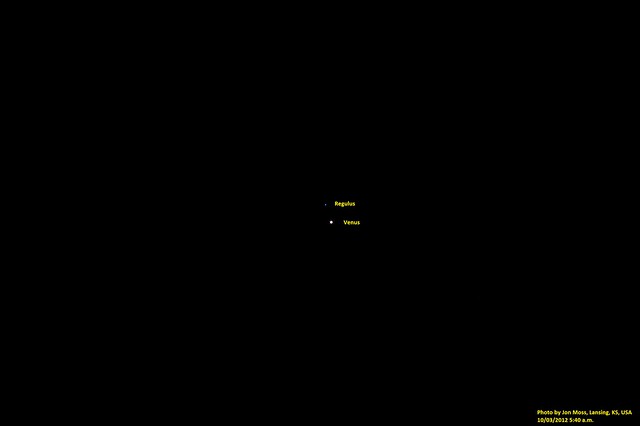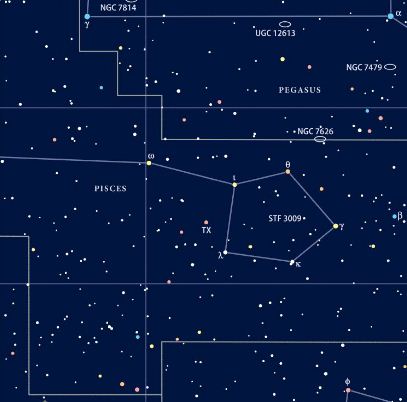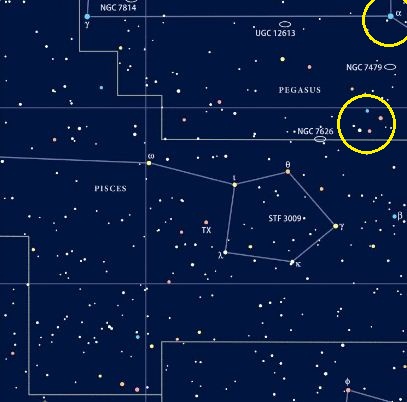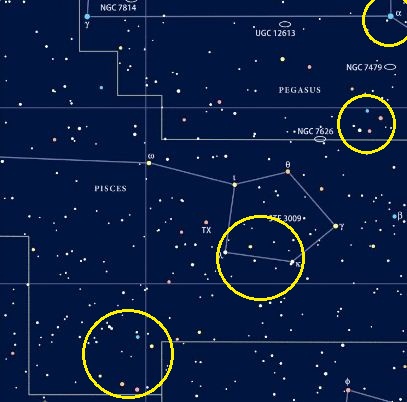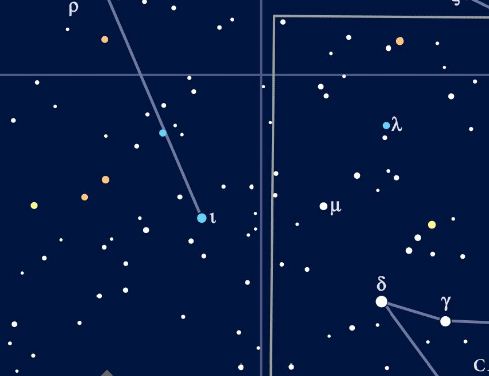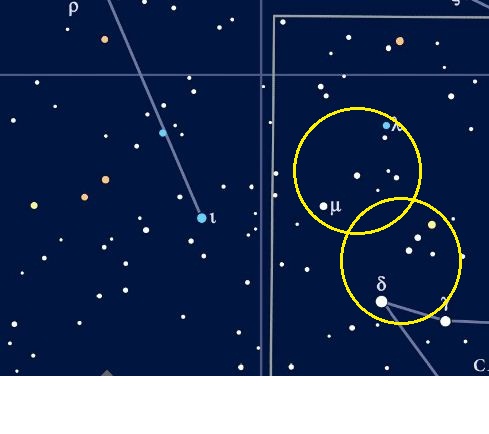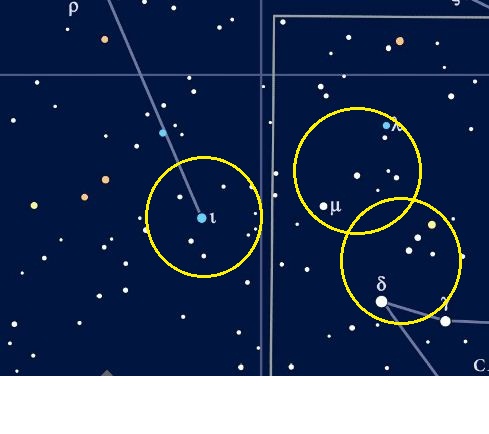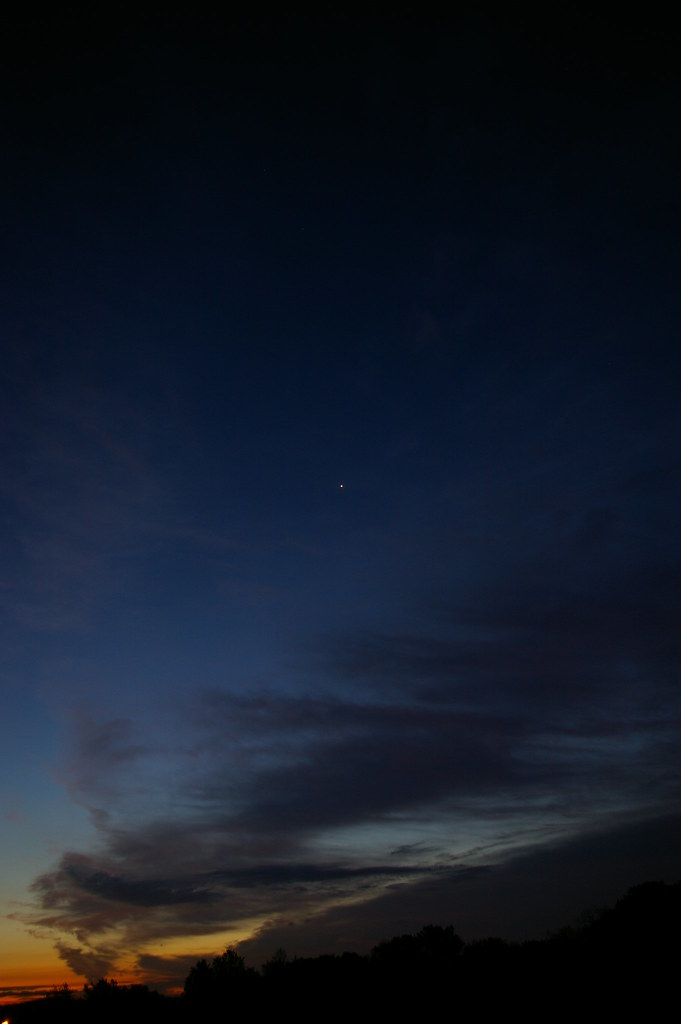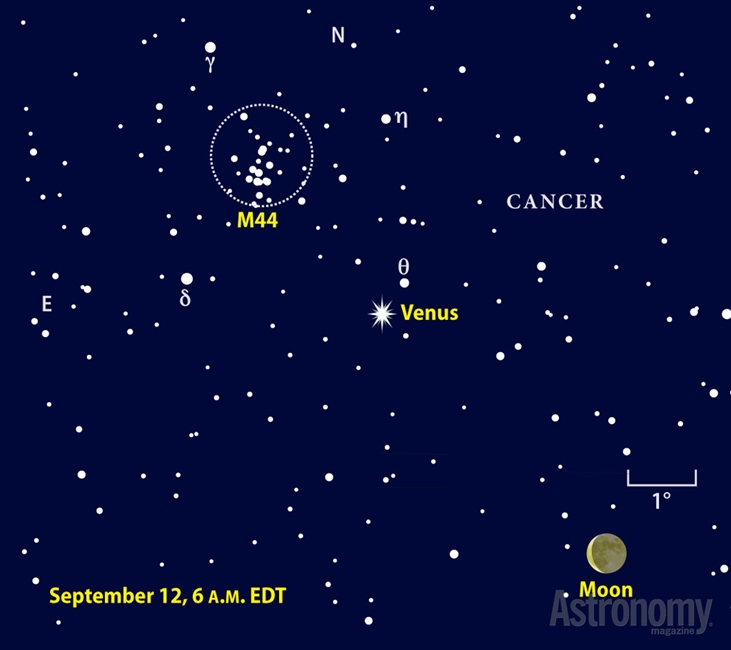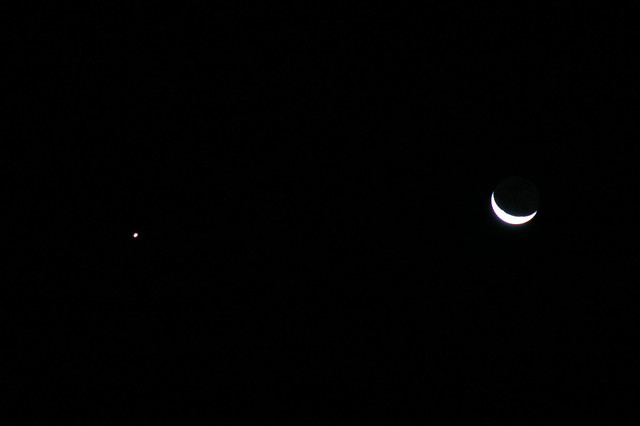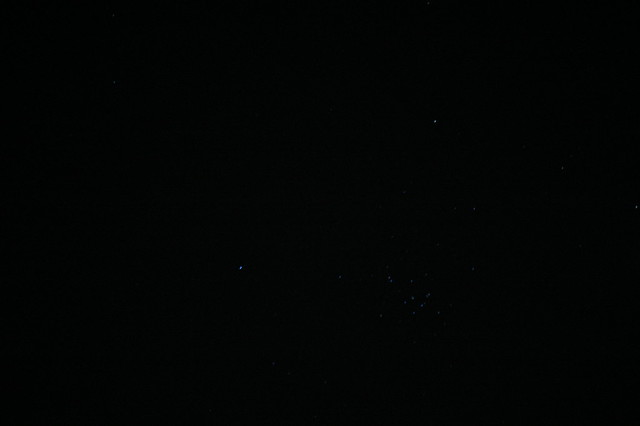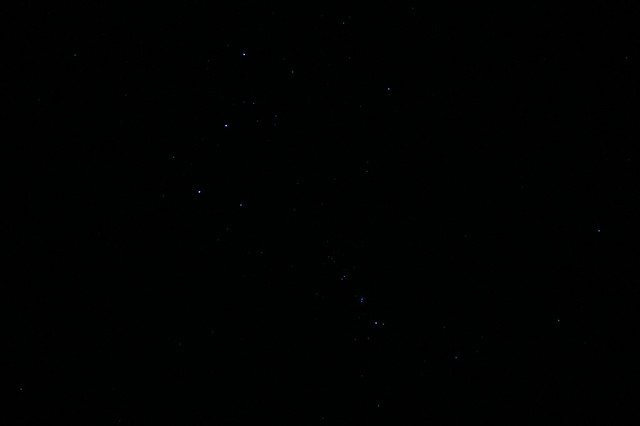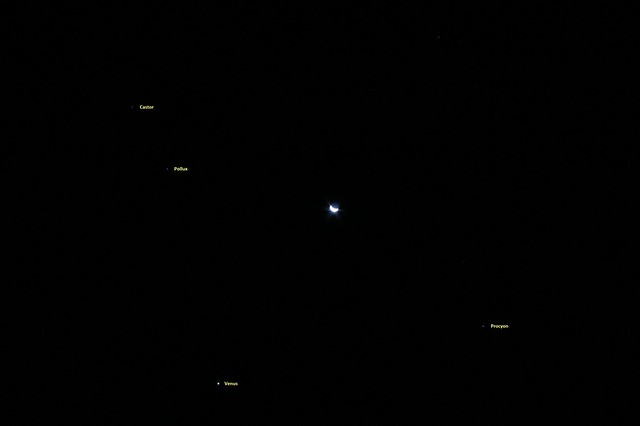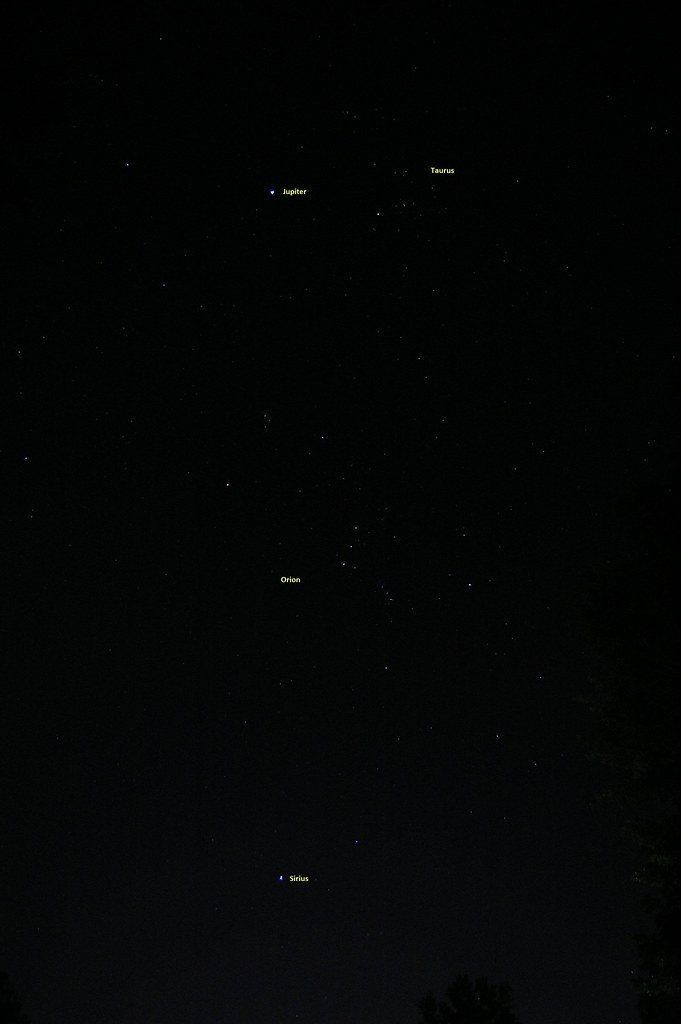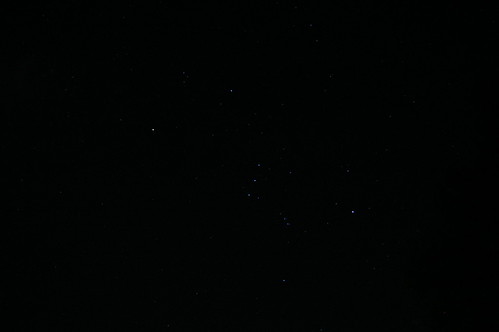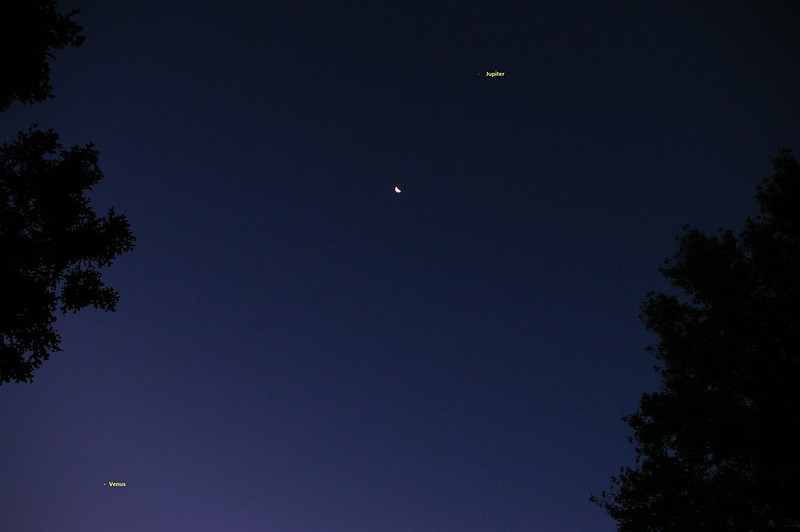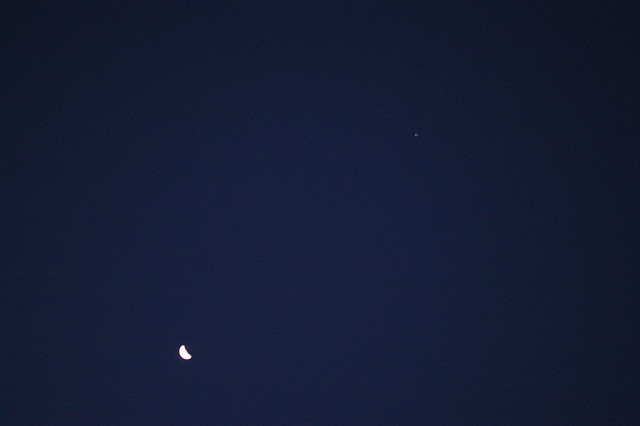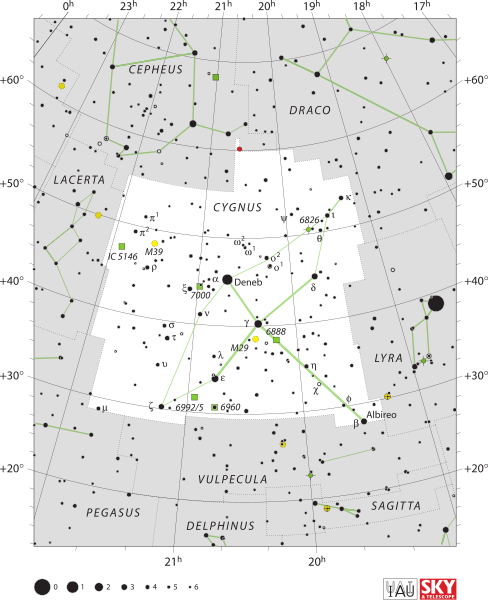 Last week I posted about counting stars, assuming I’d have ample opportunities to star gaze any evening, thanks to one of the worst droughts since the early 20th century. And that same evening, a week ago on Monday the 8th of October, I took my binoculars with me to the backyard at 8:30 p.m. and let my eyes adjust for night vision for fifteen or twenty minutes. A few wispy clouds striated the night sky and a high school football game just a block away to my northeast made for less than stellar seeing. I estimated I could see fourth magnitude stars in the constellation Cygnus, but knew I could see better if the conditions improved bit. I’ve seen more stars in that constellation from the exact same spot in the past, including last year’s star count. I decided not to report my findings on the 8th to the Great World Wide Star Count web site, opting to observe on a succeeding evening.
Last week I posted about counting stars, assuming I’d have ample opportunities to star gaze any evening, thanks to one of the worst droughts since the early 20th century. And that same evening, a week ago on Monday the 8th of October, I took my binoculars with me to the backyard at 8:30 p.m. and let my eyes adjust for night vision for fifteen or twenty minutes. A few wispy clouds striated the night sky and a high school football game just a block away to my northeast made for less than stellar seeing. I estimated I could see fourth magnitude stars in the constellation Cygnus, but knew I could see better if the conditions improved bit. I’ve seen more stars in that constellation from the exact same spot in the past, including last year’s star count. I decided not to report my findings on the 8th to the Great World Wide Star Count web site, opting to observe on a succeeding evening.
As the week wore on, I began to despair. Clouds rolled in on Tuesday or Wednesday and stubbornly blocked the sky, but didn’t drop much rain, until Sunday morning. I am overjoyed for the rain, but disappointed at the lost observing opportunities. Rain all day, but please dissipate when the sun sets.
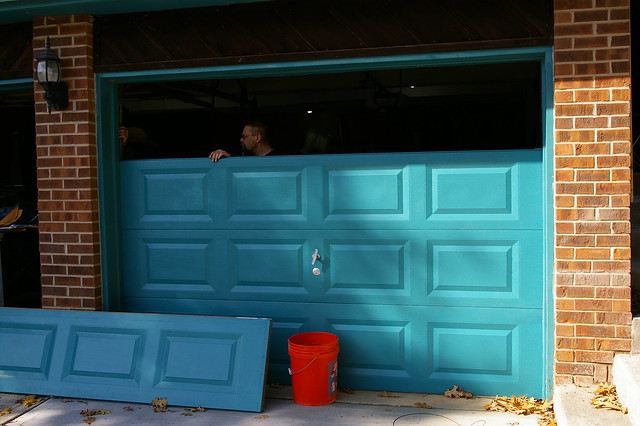 My next opportunity to observe came Sunday evening, after a long day of hanging garage doors. We called it quits around 8:30 p.m. and sent my dad home to get some rest just after 9:00 p.m. I didn’t remember about the star count until Monday morning, when I stepped outside and saw Venus, Jupiter, Sirius, the Pleiades and Orion for the first time in a week. I went back in and got my binoculars for a quick fix of planet, star, open cluster and nebula observing before leaving on the morning work commute.
My next opportunity to observe came Sunday evening, after a long day of hanging garage doors. We called it quits around 8:30 p.m. and sent my dad home to get some rest just after 9:00 p.m. I didn’t remember about the star count until Monday morning, when I stepped outside and saw Venus, Jupiter, Sirius, the Pleiades and Orion for the first time in a week. I went back in and got my binoculars for a quick fix of planet, star, open cluster and nebula observing before leaving on the morning work commute.
Monday evening, I got home to more progress on the garage doors and wispy clouds during sunset. Grrr. I took Apollo on a short walk after eight o’clock. During our walk, I kept trying to look up at Cygnus, but with it being directly overhead, I risked tripping over something if I tilted my head back far enough to observe. Once back home, I went right back outside and laid down on my patio. After fifteen minutes or so, I determined I could see fourth and possibly some fifth magnitude stars in the constellation.
 I texted my husband, asking him to bring me my binoculars. I didn’t want to get up (still very sore from the garage door project and my strength training exercise class at work) and/or ruin my night vision. He graciously brought them to me, and I went looking for the double cluster in Perseus. I think I found it, but I couldn’t’ confirm it because my star atlas was locked in the backseat of the car on the other side of the house, where I’d left it after my final stint as a volunteer staff member at a Powell Observatory public night. Saturday night, the one where thunderstorms and lightning further discouraged star gazing.
I texted my husband, asking him to bring me my binoculars. I didn’t want to get up (still very sore from the garage door project and my strength training exercise class at work) and/or ruin my night vision. He graciously brought them to me, and I went looking for the double cluster in Perseus. I think I found it, but I couldn’t’ confirm it because my star atlas was locked in the backseat of the car on the other side of the house, where I’d left it after my final stint as a volunteer staff member at a Powell Observatory public night. Saturday night, the one where thunderstorms and lightning further discouraged star gazing.
Tonight, after raking the front lawn under the odious burr oak tree, I will try to catch the new moon just after sunset and then drive to northwest Leavenworth County to places I frequented in my youth. I will repeat the star count and compare notes, so to speak.
If you haven’t observed and reported your star count findings yet, you still have four days. The deadline is this Friday, October 19, 2012.


